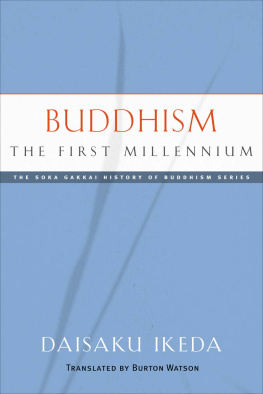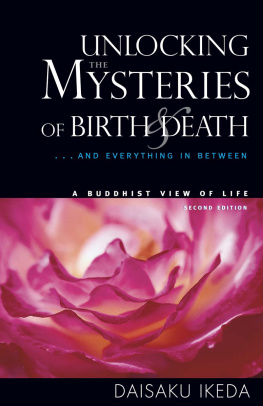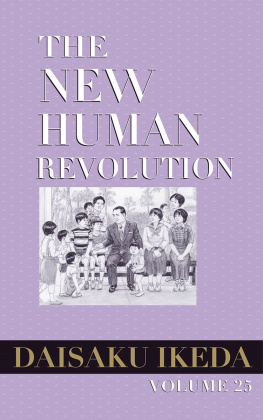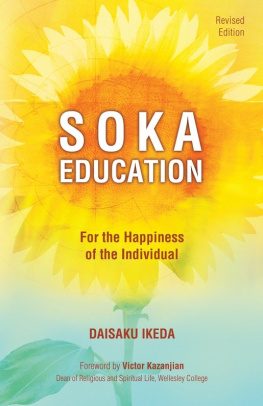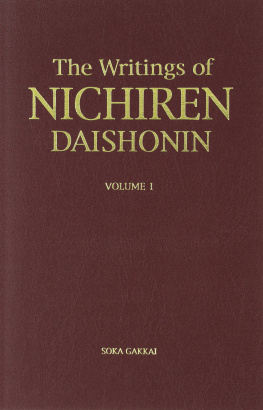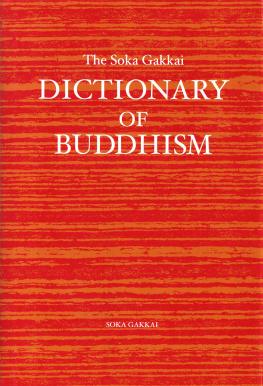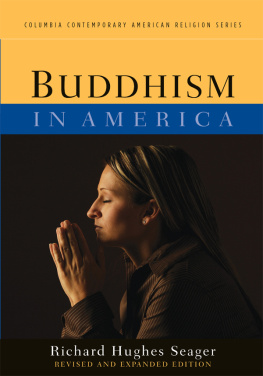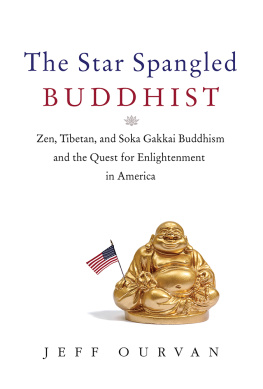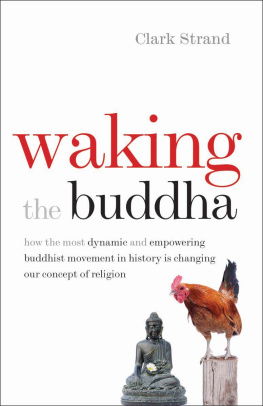Encountering the Dharma:
Daisaku Ikeda, Soka Gakkai, and the Globalization of Buddhist Humanism
Richard Hughes Seager

- (p.iv) University of California Press, one of the most distinguished university
- presses in the United States, enriches, lives around the world by advancing
- scholarship in the humanities, social sciences, and natural sciences. Its
- activities are supported by the UC Press Foundation and by philanthropic
- contributions from individuals and institutions. For more information,
- visit www.ucpress.edu.
- University of California Press
- Berkeley and Los Angeles, California
- University of California Press, Ltd.
- London, England
- 2006 by The Regents of the University of California
- Library of Congress Cataloging-in-Publication Data
- Seager, Richard Hughes.
- Encountering the Dharma: Daisaku Ikeda, Soka Gakkai, and the globalization
- of Buddhist humanism / Richard Hughes Seager.
- p. cm.
- Includes bibliographical references and index.
- ISBN 9780520245778 (pbk.: alk. paper)
- 1. Soka Gakkai. 2. GlobalizationReligious aspectsSoka Gakkai.
- I. Title
- BQ8415.8.S43 2006
- 294.3928dc22 2005006619
- Manufactured in the United States of America
- 15 14 13 12 11 10 09 08 07 06
- 13 12 11 10 9 8 7 6 5
- This book is printed on New Leaf EcoBook 50, a 100% recycled fiber of
- which 50% is de-inked post-consumer waste, processed chlorine-free.
- EcoBook 50 is acid-free and meets the minimum requirements of
- ANSI/ASTM D563401 (Permanence of Paper).
Dedication
(p.v) For Tippy, with whom I First crossed cultures (p.vi)
(p.ix) Acknowledgments
Many friends, colleagues, and associates encouraged me as I developed and completed this book, but a number of institutions and people deserve special acknowledgment for the specific contributions they made in assisting me.
First, Boston Research Center for the 21st Century provided financial support, administered through Hamilton College, without which I could not have undertaken the project. I want to thank its president, Masao Yokota, whose visits became a source of unexpected pleasure throughout the time I worked on the book, and Robert Eppsteiner, who lent me valuable aid during research trips and support when I encountered obstacles while working on the manuscript. I also thank Lane Zachary, who encouraged my creativity while fielding issues writers face in the publishing world today.
Hamilton College was generous in granting me leave to pursue this work. My colleagues in the Religious Studies Department consistently encouraged me to develop courses in which I was able to deepen my understanding of the Soka Gakkai. The librarians at Burke Library gave me valuable assistance in collecting important background material. Terri Viglietta was a great help in preparing the final manuscript.
Special thanks go to people in Soka Gakkai International's Office of Public Information for their work in coordinating research trips, providing translation services, and enlisting the cooperation of Gakkai members on three continents. In particular, I want to thank Toshinori Iwazumi, Rie Tsumura, Andrew Gebert, and, especially, Mari Shikoda, who sustained a transpacific correspondence with me that was vital to my work.
(p.x) There are numerous individual members in the Soka Gakkai International movements in Japan, Singapore, Brazil, and the United States whom I would like to remember for their openness and interest in my work and for the entertaining times we shared together. For the sake of brevity, I extend to them all a collective thank-you.
And I send heartfelt regards to President Ikeda not simply for his support, without which this project would have been unthinkable, but also for the personal kindness he showed to me during a difficult transition in my life.
(p.xi) Preface
This book originated in a 1999 conversation with Robert Eppsteiner, at that time academic liaison for the Boston Research Center for the 21st Century (BRC), an activist group in Cambridge, Massachusetts, associated with the Soka Gakkai. From the outset, I had a strong professional interest in the project: I have long been preoccupied with the East-West encounter and have done sustained work on Buddhism in the United States. In a Columbia University Press book, Buddhism in America) I devoted a chapter to the Buddhist Humanism of the Soka Gakkai, the research for which piqued my interest in both Daisaku Ikeda, the organization's longtime president, and the remarkable history of modern Japan.
During research for that book, I came to see how scholars of American religious history are at a disadvantage for at least two reasons when studying the Americanization of Buddhism. First, we rarely understand the Asian background of groups before they arrive in the United States. Second, we do not necessarily look beyond the limited horizon of our own culture to locate the American experience in the broad contours of globalization. This project, however, gave me the chance to think about Japan, to immerse myself in at least one significant part of modern Asian history, and to get some sense of Buddhism around the globe.
From that preliminary conversation with Rob Eppsteiner, I was convinced that I needed to write a book in which there would be a degree of personal engagement with academic issues. That way I would be able to negotiate the fact that, while I have become a specialist in Buddhism coming to the United States, I am a nonspecialist in Japanese religion and history. I felt that a personalized narrative voice would enable me (p.xii) to wonder, ponder, probe, and struggle to make sense of the Gakkai and Japan in terms familiar both to myself and to the reader.
Such a voice would also give me an opening to investigate a fascinating dimension of the movement's history. Since its founding in the 1930s, the Soka Gakkai has repeatedly found itself at the center of controversies, some linked to major struggles over the future of Japan, others to intense internal religious debates that erupted into public view. Over the course of its history, however, it has also grown into a large, politically active, and very well established network of institutions, whose membership represents something on the order of a tenth of the Japanese population. One result is that there is a fractured view of the movement in Japan. On one hand, it is seen as a highly articulated, politically and socially engaged movement with an expressed message of human empowerment and global peace. On the other, it has been charged with an array of nefarious activities that range from fellow traveling with Communists and sedition to aspiring to world domination.
To varying degrees this fractured view has followed the movement overseas, where, despite its success at globalization, it has had to contend with both the legacy of Japanese militarism in Asia and the concerns of observers in the West that the movement was in some way an Asian cult. That the Soka Gakkai is a form of Nichiren Buddhisma uniquely Japanese expression of Buddhism that evokes few of the romantic notions Westerners associate with Zenhas contributed to this misunderstanding. That since its founding Soka Gakkai has often been aggressive about proselytizing, rarely quietistic, and devoted to social transformation has also contributed to its reputation.


